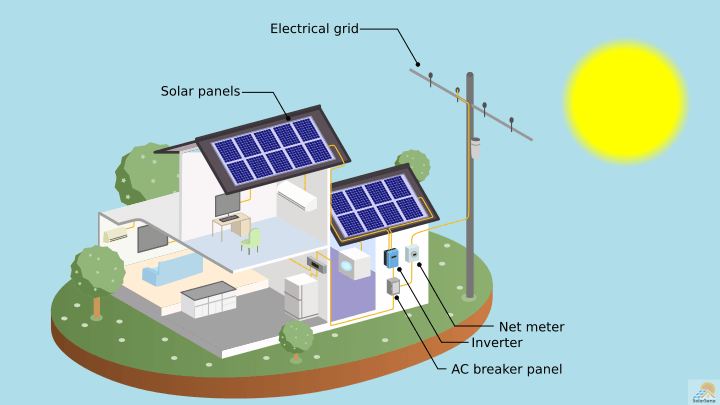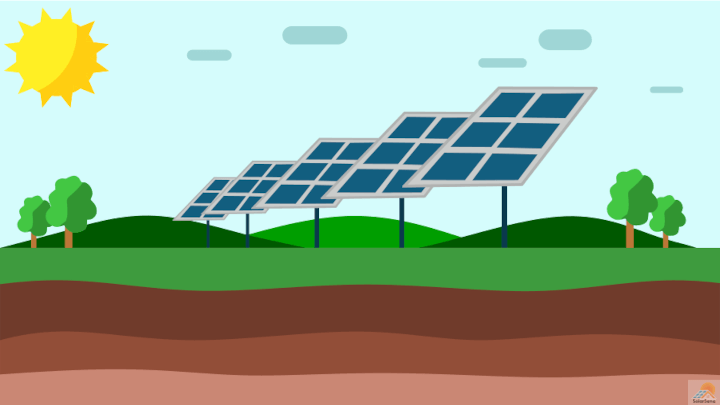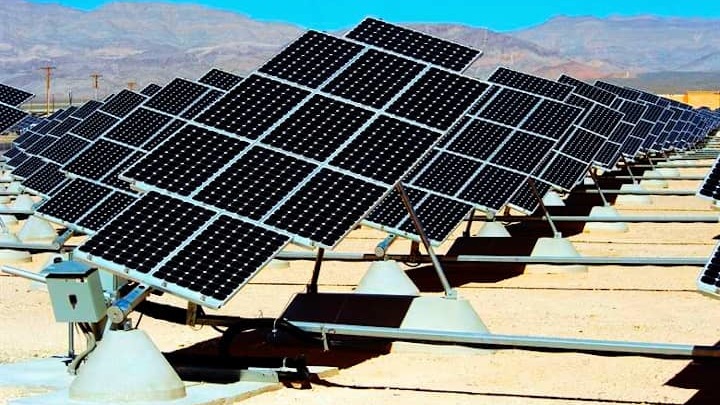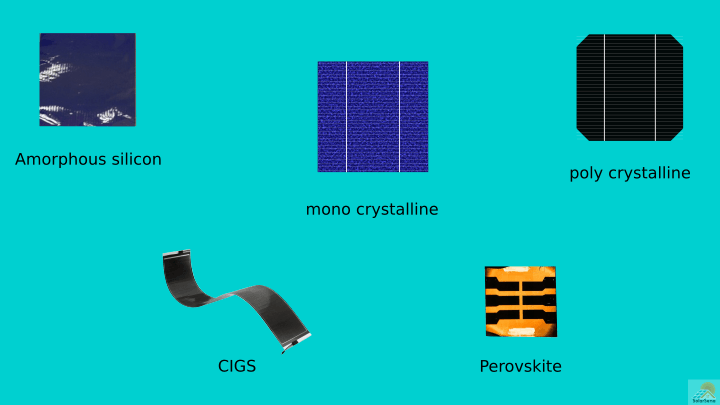Solar technology continues to thrive in developed and developing countries. In the first quarter of 2020 alone, the US has installed 3.6 GW of the solar PV system. And the number will rise in the coming years. As the economics of solar energy improves, the world will see more homes and commerce switching to renewable energy. Whether you are thinking of installing or have already installed solar, one common question that you may have in your mind: how do solar panels work?
In this article, we will learn about the working of the solar panel system. Additionally, you will get to know the major components of the photovoltaic (PV) system. And it will also answer how solar panels generate electricity.
Working of the solar panel system
The solar panel system is a photovoltaic system that uses solar energy to produce electricity. A typical solar panel system consists of four main components: solar panels, an inverter, an AC breaker panel, and a net meter.

Solar panels are a fundamental part of the system. They have the ability to absorb light and transform it into electricity. When solar energy, or sunlight, falls on panels, the material of solar panels absorbs it and produces direct current (DC).
This direct current (DC) produced from the panels is unsteady and fluctuating. We cannot directly feed this DC to home appliances. If you know, the electricity we receive from electrical grids is always alternating current (AC). So, we need to convert DC produced from panels to AC. It is where the inverter comes in.
An inverter is an electrical device that converts DC to AC. A solar inverter converts variant DC to AC. The outgoing AC from the inverter is healthy electricity, which flows to the AC breaker panel of the home.
The main AC breaker panel is the distribution board of the home. From here, the electric current gets distributed to various circuits.
On bright sunny days, your solar panels will likely produce more electricity than you can consume. This surplus electricity is exported to the utility grid via the net meter. The net meter records the amount of energy exported by your solar system as well as the energy consumed from the grid. This energy export adds to your energy credit.
Step-by-step working of the solar panel system
We can summarize the working of solar panels into the following points:
- Solar panels absorb sunlight to produce electrical energy.
- The inverter converts the absorbed energy into useful electricity.
- The generated electricity is supplied to the AC breaker panel of the home.
- And surplus electricity flows to the utility grid via the net meter.
The infographic below represents the same.

Now, you may have some basic understanding of the photovoltaic system. In the rest of the article, we will further explore each of the steps and study them in greater detail.
Absorption of solar energy
Sun is an immense burning object in space. We can fit 1.3 million Earth-size planets in the sun; it’s so big. It is not only a big floating star but also the ultimate energy source in our solar system. Every second, it emits a tremendous amount of energy in all directions. Some of it falls on the earth. Sunlight that we receive from the sun is nothing but solar energy.
When this free-falling solar energy hits the surface of solar panels, the energy is absorbed by the material of panels to generate electricity. To explain how solar panels work and what material they are made of, we first need to understand solar cells.
Solar cells
If you have solar panels installed nearby, go there and look closely at them. You will notice each panel consists of several small rectangular or octagonal units. These units are nothing but solar cells.

Solar cells are the engine of the photovoltaic system. They convert incident solar energy into electricity. The power generated by each cell adds up to the total power of the panel. Other parts of panels include a metal frame, a protective glass cover, and wires.
Simple working of solar cell
Each solar cell is made of photovoltaic material, mostly crystalline silicon. Crystalline silicon is a unique material and shows semiconductor properties. When light hits the surface of crystalline silicon, the electrons inside the material absorb the light and jump into an excited state. This interaction between sunlight and solar cells is termed the photovoltaic effect. The phenomenon was discovered by Edmond Becquerel in 1839.
When we close the circuit by connecting the upper and rear end of the solar cell, the excited electrons flow into the circuit. The diagram below depicts the same.

As the stream of the excited electrons flows through the upper region of the cell into the electric circuit, it constitutes an electric current. Thus, the solar cell has successfully produced electricity by absorbing sunlight.
Note: The diagram and explanation above are the most simplified version. The proper scientific explanation and diagram are very complex and beyond the scope of the article.
In the same manner, every other solar cell in a panel produces solar power. The total power is the combined effect of each cell.
There are some serious problems with the final electric current coming from solar panels. First, it’s unsteady and fluctuating since solar power depends on solar irradiance. Solar irradiance changes from season-to-season, day-to-day, and even hour-to-hour. When you have bright sun, your system will produce more than in cloudy weather. In other words, we have to regulate the electric current.
Also, solar panels produce direct current (DC). In direct current, electrons flow only in one direction. The electricity we receive from our electrical grids is always alternating current (AC). It is necessary to convert DC from solar panels to AC. This is the job of power inverters.
Direct current to alternating current by solar inverters
Solar inverters are the most critical component of the photovoltaic system after solar panels. They convert the fluctuating direct current (DC) coming solar panels into alternating current (AC). AC produced by solar inverters must match with AC of your utility grid. In other words, they must have the same characteristics. For example, the frequency of AC coming from the inverter must be the same as the grid. In the US, it’s 60 hertz.
It is absolutely necessary. Otherwise, your solar system will not work.
There are various types of solar inverters. Which one is right for you depends on what kind of solar system you want. It also depends on what your solar contractor can provide.
The efficiency of solar inverters varies from 90% to 98%. These numbers are pretty good and have been increasing over the years. So, there are not considerable losses in the conversion of DC to AC.
Once we have obtained healthy electricity, we need to connect the inverter output to the main AC breaker panel.
Inverter to AC breaker panel
The main AC breaker panel is a distribution board. It’s a metal box probably mounted on the outside or inside wall of your house. The electrical supply from the grid enters the main AC breaker and distributes it into small wires, providing electricity to every device.

It is where the output of the solar inverter gets attached. From the AC breaker panel, solar power reaches each appliance.
Net metering
Net metering is a wonderful concept. It allows consumers to export excess electricity from their systems to the utility grid. This idea encourages people to switch to solar power.
On bright sunny days, your solar system will produce more electricity than your normal needs. This excess solar power is sent to the utility grid via the net meter. The net meter accesses the amount of power exported to the grid as well as the power consumed from the grid.
The major benefit of net metering technology is it makes consumers producers of electricity. The amount of power exchange from the solar system to the grid is rewarded as energy credits.
You can trade earned energy credit with conventional electricity when your solar panels are not working. For example, at night or on cloudy days, solar panels do not work since there is no sun, so no solar power. But you do have electricity from the utility grid. And you can trade your earned credits with it.
In a sense, you can imagine net metering as a free storage system. It gives you a way to store solar power when in excess and use it back in an outage of solar. This idea has really strengthened solar technology and encouraged people to switch to solar power.
Something is missing
Batteries. In the previous explanation, there is not a single line that mentions batteries. Batteries are useful components of the photovoltaic system. But they are optional, not necessary, particularly for residential projects. You can incorporate batteries in your installed photovoltaic system, so excess power generated is saved in them.
They come in handy when there is a utility power outage. Many solar installers provide backup batteries. Batteries fit before inverters in the photovoltaic system. However, the major drawback of batteries is they are quite expensive.
Summing up
Whether your photovoltaic system is rooftop or ground-mount, or residential or commercial, the working remains almost the same. Here is a quick wrap up of everything above.
Sun emits sunlight, which strikes solar panels. When rays of light hit electrons in solar cells, they absorb sunlight. It produces an electric current. And this phenomenon is called a photovoltaic effect.
The electric current produced from solar panels is direct current. The inverter converts direct current to alternating current, which is fed to the AC breaker panel. From the AC breaker panel, solar power touches every appliance.
When panels produce excess solar power, the net metering allows it to transport to the utility grid, rewarding energy credit in exchange.
It is where the output of the solar inverter gets attached. From the AC breaker panel, solar power reaches each appliance.




